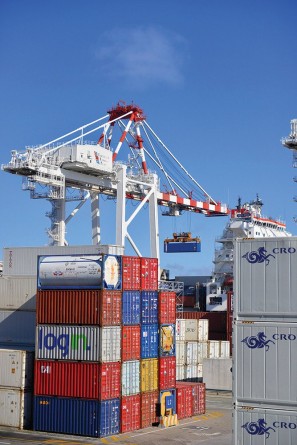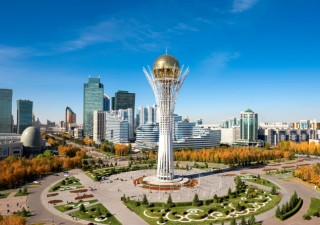Free trade zones and fake goods
31 May 2019

The updated “Trends in Trade in Counterfeit and Pirated Goods” report by the Organization for Economic Cooperation and Development (OECD) and the European Union Intellectual Property Office (EUIPO) sheds light on free trade zones (FTZs) and how they affect global trade of fake goods.
Based on 2016 data, the report says that international trade in counterfeit and pirated products could have amounted up to US$509 billion that year. This number is 3.3 percent of overall world trade. However it does not include counterfeit and pirated goods manufactured and consumed domestically. It also does not include pirated digital items distributed online.
In 2013, the volume of internationally traded fake goods was at 2.5 percent of world trade. This is equivalent to US$461 billion.
Certainly, the illegal activity has increased over a period of three years and this impacts intellectual property or IP.
These fake goods mostly consist of footwear, clothing, leather goods, electrical machinery and equipment, perfume, cosmetic products, toys, pharmaceuticals, jewelry and watches among others. They originate from all corners of the globe but the biggest chunks come from China and Hong Kong. Many also originate from Singapore, Turkey, Thailand, and India.
Illegal entities ply their trade by sending large containers of counterfeit and pirated goods through complex routes with intermediary points. Here in these intermediary points, the documents are tampered with. The products are then sent in smaller shipments via post or express service to their destinations. Such practice involving small shipments, which are less likely to be detected by enforcement authorities, is growing as well.
Companies which have been affected are primarily those in the United States, Korea, Japan, France, Italy, Switzerland, Germany and the United Kingdom. Those in Singapore and Hong Kong are also increasingly being affected. Meanwhile, more and more rights holders registered in China, Brazil and other emerging economies are also now bearing the brunt.
“The Chinese government recognizes that this is a serious issue and has implemented various measures to address this,” says Alison Wong, a partner at Bird & Bird in Hong Kong. “For instance, China has established specialized IP courts with the goal of increasing efficiency and consistency among IPrelated cases. The SPC judicial interpretation on IP injunctions recently took effect, enabling courts to issue preliminary injunctions pending judgment in an action. The PRC Trademark Law amendment, which will come into effect on November 1, 2019, increases the maximum statutory damages to Rmb5 million (US$724,000) and also enables courts to grant orders to destroy counterfeit goods and moulding. In terms of ‘gaps,’ the Chinese government recognizes that the PRC Copyright Law is currently due for amendment. Under the current law, there are no punitive damages and the maximum statutory damages that may be awarded for copyright infringement.”
So why do certain countries end up becoming centres of counterfeit and pirated goods trading?
The 2018 OECD-EUIPO report “Why Do Countries Export Fakes: The Role of Governance Frameworks, Enforcement and Socio-economic Factors, Illicit Trade,” says that one of the reasons is the safety offered by a country’s FTZs to illegal traders. A good infrastructure and weak oversight make up this safety net. Another driver is corruption and weak IP protection.
The purpose of FTZs is to spur international business activities and allow countries to benefit.
“FTZs are attractive to commercial entities due to tariff preferences, elimination of nontariff barriers, convenience of trade and promotion of input of capital, products and services. FTZs also result in more affordable imported products, increased employment opportunities and more abundant goods and services,” says Wong.
Yet, FTZs have also proven to be instrumental in encouraging illegal trade. The OECD and EUIPO report that “The existence, size, and number of FTZs in a country correlate with increases in the value of counterfeit and pirated products exported by that country’s economy.” Both institutions add that a new FTZ in a country is associated with a 5.9 percent increase in the value of such goods on average.
Wong admits that IP protection should be strengthened in light of this. “For instance, IP legislation can be enacted which provide for express enforcement channels and the establishment of a unified recording system for suspected counterfeit products and illegal traders. Local authorities ought to strengthen IP enforcement in FTZs by promptly addressing counterfeit complaints as they arise, enhance monitoring and screening of goods in FTZs and impose heavier sanctions on illegal traders to deter infringing acts as necessary,” she says.
According to Stanley Lai, a partner and head of the IP practice at Allen & Gledhill in Singapore, the country’s laws and policies including its border enforcement measures are strong enough to curb the problem of counterfeiting.
“Most pertinently, Singapore has also enacted the Intellectual Property (Border Enforcement) Act, which further enhances border enforcement measures for the protection of intellectual property rights. These laws proscribe the importation and trade of counterfeit goods, with criminal penalties. Customs officers are empowered to search vessels, aircraft and vehicles, and seize, forfeit, dispose, and/ or detain infringing copies of the counterfeit goods or material upon notification by the rights owners of the potential import of counterfeit goods. These powers may also be exercised on an ex officio basis. Singapore Customs may also provide intellectual property rights holders with the name and contact details of any person(s) who may be connected with the import or export of seized goods necessary for instituting intellectual property rights infringement proceedings,” Lai explains.
Lai and Wong also believe that IP owners themselves should be proactive in safeguarding their rights and notifying the authorities about infringing products.
“Asian countries are ranked amongst the top in terms of global trade in counterfeit goods,” says Wong. “Therefore, countries within the region could generally do more to combat the issue of counterfeiting, such as cooperating in more joint cross-border enforcement of IP rights.”
Espie Angelica A. de Leon






